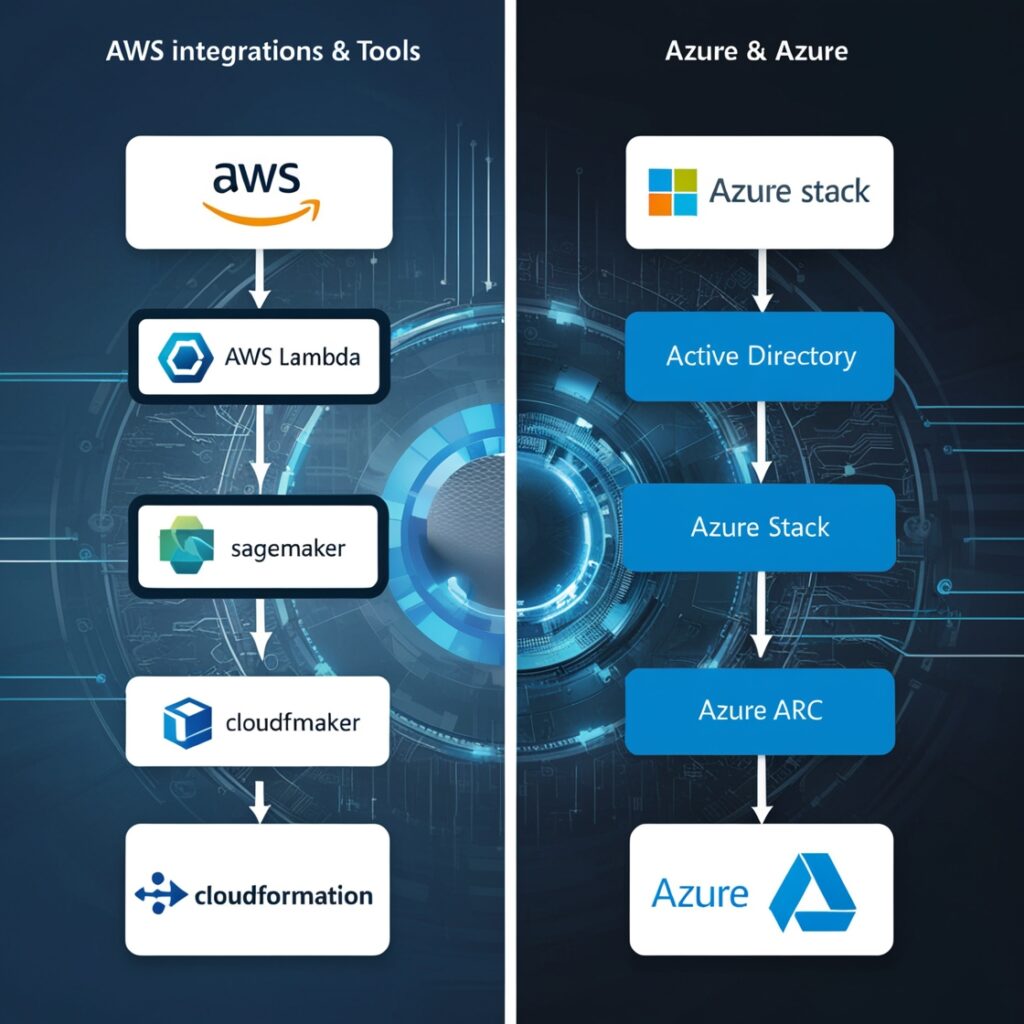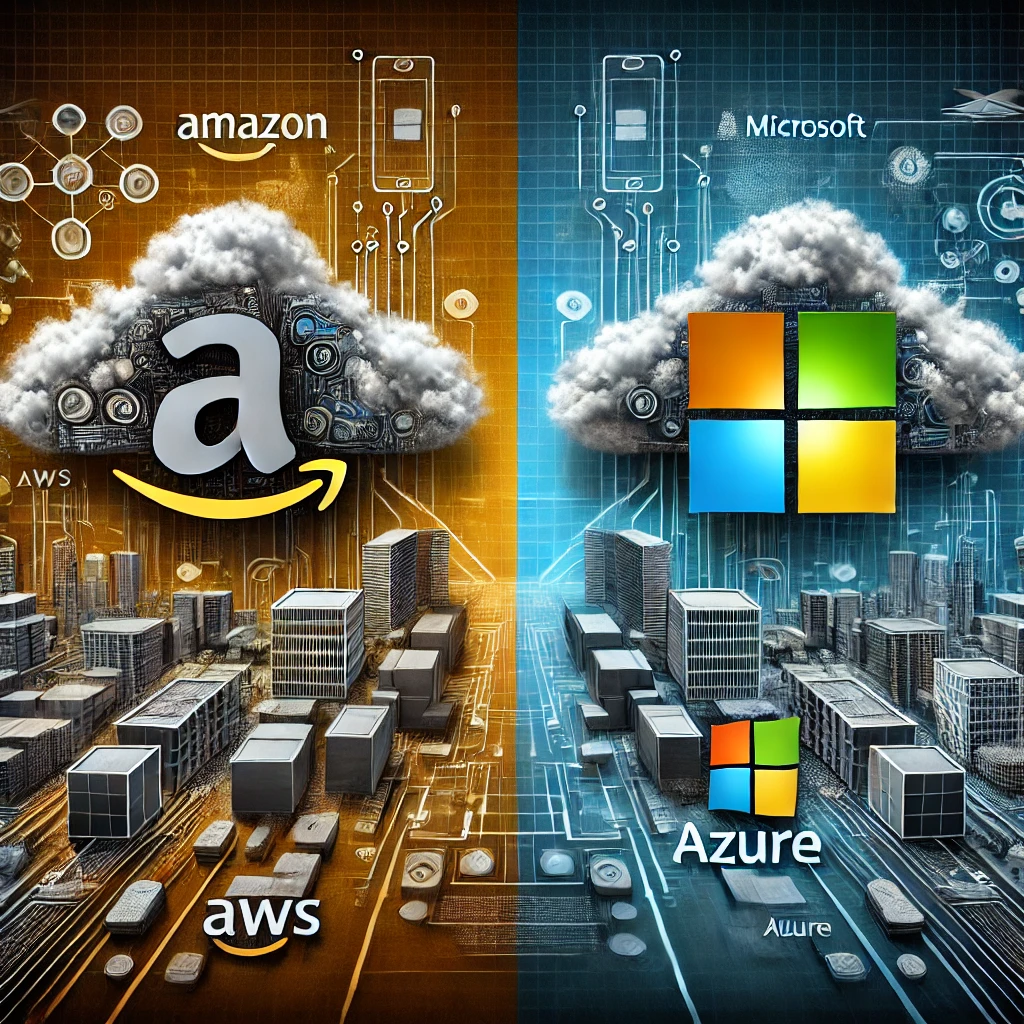In today’s digital landscape, choosing the right cloud provider can make or break your organization’s digital transformation journey. Amazon Web Services (AWS) and Microsoft Azure stand as the two dominant forces in cloud computing, but which one deserves your investment? Let’s dive deep into a comprehensive comparison that will help you make an informed decision.
Market Position and Global Reach
AWS currently leads the market with approximately 32% market share, while Azure follows closely with 28%. Both providers offer extensive global coverage, but their approaches differ:
- AWS: 32 geographical regions with 102 availability zones
- Azure: 60+ regions with presence in 140+ countries
AWS vs Azure Cost Structure and Pricing Models
AWS Pricing
AWS follows a pay-as-you-go model with some unique features:
- Reserved Instances offering up to 72% discount
- Spot Instances with up to 90% savings
- Free tier for 12 months on selected services
Real-world example: A startup running a web application with 2 t3.medium EC2 instances, an RDS database, and 500GB storage might cost around $150/month with AWS.
Azure Pricing
Azure provides:
- Pay-as-you-go options
- Azure Hybrid Benefit for Windows Server licenses
- Dev/Test pricing for development environments
- Free tier with 12 months of popular services
Real-world example: The same setup on Azure using B2MS VMs and Azure SQL Database might cost approximately $165/month.

Service Integration and Ecosystem
AWS Strengths
- Mature Service Portfolio
- 200+ fully featured services
- Strong container orchestration with EKS
- Advanced ML capabilities with SageMaker
- Developer Tools
- CodePipeline for CI/CD
- CloudFormation for infrastructure as code
- AWS Lambda for serverless computing
Azure Advantages
- Microsoft Integration
- Seamless Active Directory integration
- Native support for .NET applications
- Tight integration with Microsoft 365
- Hybrid Cloud Capabilities
- Azure Stack for on-premises deployment
- Azure Arc for multi-cloud management
- Strong hybrid identity management
Real-World Use Cases
AWS Success Story
Netflix leverages AWS for its streaming service, processing billions of streaming hours monthly. They use:
- Amazon S3 for content storage
- CloudFront for content delivery
- EC2 for transcoding
- DynamoDB for data management
Azure Success Story
BMW Group uses Azure to power its connected car platform, utilizing:
- Azure IoT Hub for device management
- Azure Digital Twins for virtual modeling
- Azure Machine Learning for predictive maintenance
Making Your Decision
Consider these key factors when choosing between AWS and Azure:
- Existing Technology Stack
- Heavy Microsoft user? Azure might be your best bet
- Using various open-source technologies? AWS could be more suitable
- Technical Expertise
- Team familiar with Microsoft technologies? Azure offers a gentler learning curve
- Looking for cutting-edge cloud features? AWS typically leads in innovation
- Budget Considerations
- Start with each provider’s pricing calculator
- Factor in training costs and potential migration expenses
- Consider long-term commitment discounts
- Compliance Requirements
- Both offer comprehensive compliance certifications
- Azure may have an edge in government contracts
- AWS leads in overall number of compliance programs
The Verdict
There’s no one-size-fits-all answer. Both AWS and Azure are excellent platforms with their own strengths:
Choose AWS if you:
- Need the widest range of services and features
- Want the most mature cloud platform
- Require extensive global reach
- Plan to use advanced ML and AI capabilities
Choose Azure if you:
- Have significant Microsoft investments
- Need strong hybrid cloud capabilities
- Want seamless integration with Microsoft tools
- Require specific government cloud solutions
Looking Ahead
Both providers continue to innovate rapidly. AWS maintains its leadership in service breadth and depth, while Azure leverages its enterprise relationships and Microsoft ecosystem. The best choice ultimately depends on your specific needs, existing infrastructure, and long-term technology strategy.
Remember, you’re not locked into using just one provider. Many organizations adopt a multi-cloud strategy to leverage the best of both worlds. Start small, experiment with both platforms, and scale based on your experience and requirements.
What’s your experience with AWS or Azure? Have you tried both platforms? Share your thoughts and experiences in the comments below!
Author’s Note: Cloud service offerings and pricing constantly evolve. Always check the latest information on official provider websites before making your decision.
Recent Post: AWS lambda layer


![AWS CodePipeline: The Ultimate Guide to 10X Your Deployment Speed [2024] aws codepipeline](https://devnotes.tech/wp-content/uploads/2024/11/aws-codepipeline-150x150.jpg)




